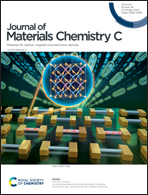The effect of thickness on the optoelectronic properties of organic field-effect transistors: towards molecular crystals at monolayer limit
Abstract
As one of the basic units of optoelectronic devices, organic field-effect transistors (OFETs) are not only promising candidates for understanding the intrinsic charge transport mechanism of organic semiconductors (OSCs), but are also attractive for various applications, such as active-matrix displays, logic circuits, photodetectors, sensors and so on. Shrinking the active layer thickness in OFETs to a few molecular layers (MLs) or even down to a monolayer is a very attractive strategy in many aspects: (1) minimize material consumption while maintaining equal or even better charge transport properties, (2) reduce bulk injection resistance for the possible realization of Ohmic contact and short channel devices, (3) enhance phototransistor performance, (4) improve sensing performance, etc. In this review, we first comprehensively summarized the effect of active layer thickness on OFET performances in thin-film and single crystal devices in terms of mobility (μ) and contact resistance (Rc). Then the phototdetector and sensor applications of OFETs toward ultrathin two-dimensional (2D) molecular materials at the monolayer limit are discussed with emphasis on the high performance of monolayer molecular crystal (MMC) based devices. Finally, the challenges and perspectives regarding the controllable preparation of MMCs and corresponding devices applications are discussed.

- This article is part of the themed collection: Journal of Materials Chemistry C Recent Review Articles


 Please wait while we load your content...
Please wait while we load your content...